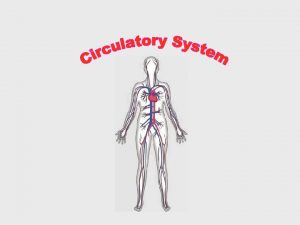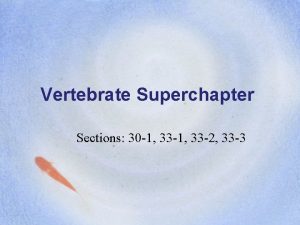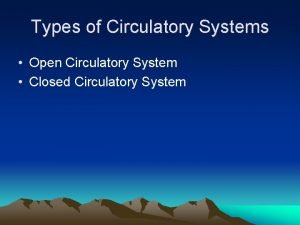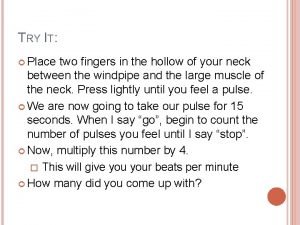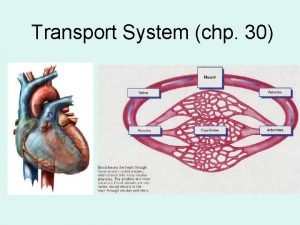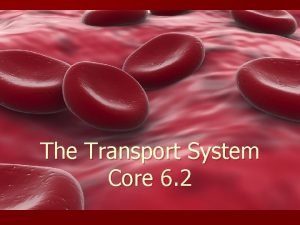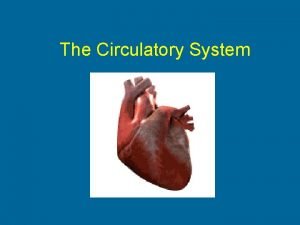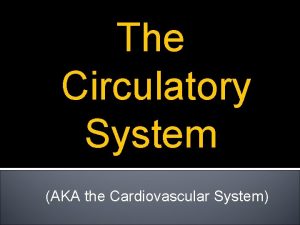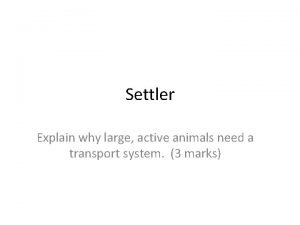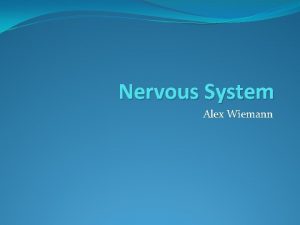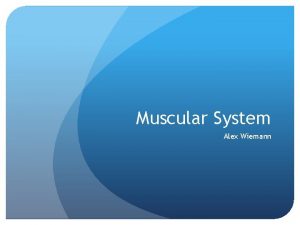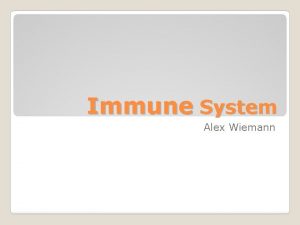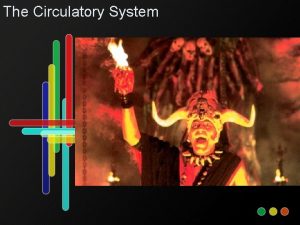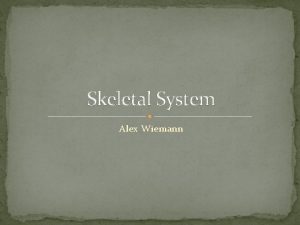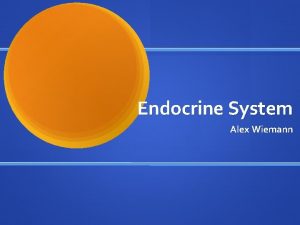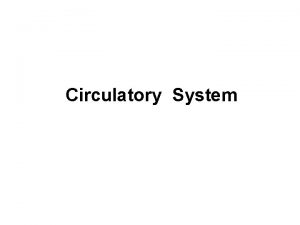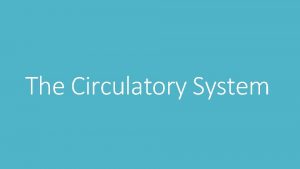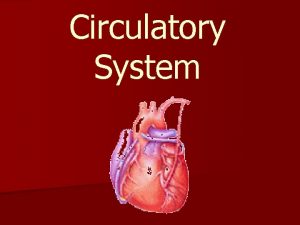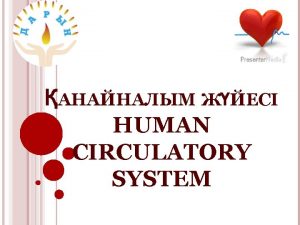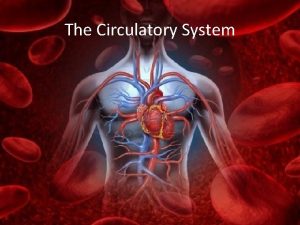Circulatory System Alex Wiemann Circulatory System The human












- Slides: 12

Circulatory System Alex Wiemann

Circulatory System �The human circulatory system functions to transport blood and oxygen from the lungs to the various tissues of the body.

Arteries, Capillaries, and Veins Arteries Capillaries Veins Structure Strong, elastic, larger Thin, singlelayered Thin, large lumens Function Pumps blood away from the heart out to the body Links arteries and veins. Where exchange of molecules happens. Pumps blood back to the heart after the exchange of molecules.

Circulatory System

The Route of Blood � Blood enters the right side of the heart through the first part of the superior and ending part of the inferior vena cava as well as the coronary sinus where it enters the right atrium. � Next it flows through the tricuspid valve into the right ventricle. � The blood goes through the pulmonary valve into the pulmonary trunk and pulmonary artery and into the lungs � Blood returns to the heart through the pulmonary veins. � The blood then enters back into the left atrium then through the bicuspid valve and into the left ventricle. � The blood flows through the aortic valve into the aorta and systemic circulation takes place and deoxygenated blood comes back through the veins and back into the heart for circulation again.

Composition of Blood �Blood is composed of formed elements including erythrocytes, leukocytes, and platelets which are also known as thrombocytes. �These elements are responsible for the duties of transport, immunity, and clotting. �These elements are carried in the plasma, the liquid form of blood.

Erythrocytes �Red blood cells, or erythrocytes, have the appearance of biconcave disks. �They take on the shape of a flattened circle with a depression in the middle. �The shape of a red blood cell is specialized for the diffusion of gas which provides a surface for transporting oxygen to the various areas of the body.

Open and Closed Circulatory System Closed circulatory system • Vertebrates have a closed circulatory system. • Closed circulatory systems have the blood closed at all times within vessels of different size and wall thickness. • Blood is pumped by a heart through vessels and does not normally fill body cavities. Open circulatory system • The open circulatory system is common to mollusks and arthropods (invertebrates). • Open circulatory systems pump blood into a hemocoel with the blood diffusing back to the circulatory system between cells. • Blood is pumped by a heart into the body cavities, where tissues are surrounded by the

The Types of Circulatory Systems

Aortic Aneurysm �A bulging of part of the aorta is called an aneurysm. �Large or fast growing aneurysms can rupture, causing significant loss of blood into the abdominal cavity. �Aortic aneurysms are usually symptomless, but if there are symptoms, they may include back, chest or abdominal pain. �Options for treatment range from watchful waiting to surgery, depending on the size and location of the aneurysm.

Arteriovenous Malformations � Arteriovenous malformations (AVMs), are abnormal tangles of blood vessels within an area of the circulatory system. � They develop either before or right after birth. � Few symptoms of AVMs show in most people with them. It is possible that AVMs could cause headaches, seizures, or paralysis, because of a decrease of oxygen to an area, bleeding, or pressing on a vital structure. � About one percent of people with AVMs die annually. � Treatment includes surgical removal, stereotactic radiosurgery, and endovascular embolization.

References � http: //www. ideacenter. org/contentmgr/showdetails. ph p/id/1113 � http: //www 2. gsu. edu/~bioasx/closeopen. html � http: //www. medicalook. com/human_anatomy/organs/ Blood. html � http: //wiki. answers. com/Q/Route_of_blood_flow_throu gh_the_heart � http: //www. phschool. com/science/biology_place/bioco ach/cardio 2/structure. html � http: //www. cliffsnotes. com/study_guide/Human. Circulatory-System. topic. Article. Id-8741, article. Id 8711. html � http: //www. mayoclinic. org/arteriovenousmalformation/treatment. html
 Digestive respiratory and circulatory system
Digestive respiratory and circulatory system How respiratory system work with circulatory system
How respiratory system work with circulatory system Circulatory system and respiratory system work together
Circulatory system and respiratory system work together Circulatory system steps in order
Circulatory system steps in order Non vertebrate
Non vertebrate Circulatory system of lungfish
Circulatory system of lungfish Clams open circulatory system
Clams open circulatory system Horse heart
Horse heart Circulatory system function
Circulatory system function Closed circulatory system
Closed circulatory system Circulatory system jobs
Circulatory system jobs 3 main parts of circulatory system
3 main parts of circulatory system Active animals
Active animals



